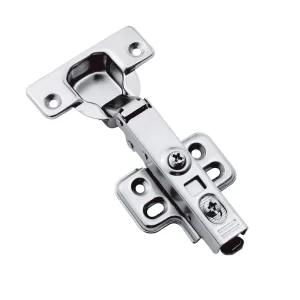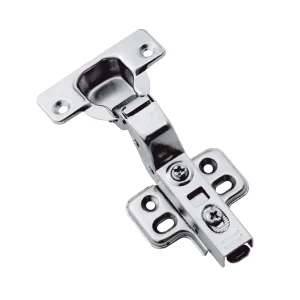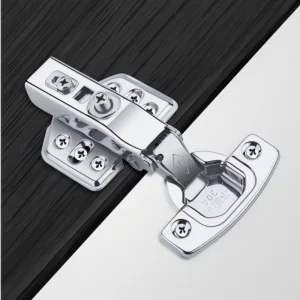Furniture hinges are crucial parts in wardrobes, cabinets and other furniture. They add smoothness, strength and beauty to doors and panels. Choosing the right hinge is crucial with regards to operation, safety and design compatibility.
Let me, as a professional hinge manufacturer, lead you through the principal classes of furniture hinges based on structure, function, type of mounting and use.
By Structure
Concealed Hinges (Cup Hinges / European Hinges)
Concealed hinges are most commonly seen in modern cabinets. They are installed inside the cabinet and can be hidden even when the cabinet door is closed, creating a simple and clean look.
Features:
- Soft-close or standard options
- Adjustable in three directions (up/down, left/right, in/out)
- Commonly used in kitchen cabinets, wardrobes, and office furniture
Butt Hinges
Traditional double leaf hinges are mounted on the surface or inside the door frame. They are visible when the door is closed.
Features:
- Simple design
- Strong and reliable
- Often used in wooden doors, small chests, and vintage furniture
Piano Hinges (Continuous Hinges)
These run the full length of the door or panel, distributing weight evenly and providing high stability.
Features:
- Excellent load-bearing capacity
- Ideal for lids, folding tables, and long panels
By Function
Soft-Close Hinges
These hinges integrate a damping mechanism that allows the door to close slowly and silently, preventing slamming and extending the life of the furniture.
Self-Close Hinges
Equipped with a spring mechanism, these hinges pull the door shut once it’s within a certain distance of closing.
Lift-Up Hinges
Used for overhead cabinets, they allow doors to open upward and stay in position.
Push-to-Open Hinges
Allow the door to open with a light push, eliminating the need for handles and creating a clean design.
By Installation Method
Inset Hinges
Designed for doors that sit flush with the cabinet frame.
Overlay Hinges
Used when the door overlays (covers) part of the cabinet frame.
Types include:
- Full Overlay
- Half Overlay
- Inset
The selection depends on the number of doors sharing a panel and the aesthetic preferences.
By Application
Cabinet Hinges
Specifically designed for kitchen, bathroom, and storage cabinets. Functionality and aesthetics are both critical.
Glass Door Hinges
Designed to secure glass panels without drilling through the glass. Commonly used in display cases or modern office furniture.
Heavy-Duty Hinges
Used for larger doors or panels requiring greater support, such as commercial furniture or storage units.
Conclusion
Understanding the classification of furniture hinges is essential to making informed decisions when designing, producing or purchasing. Whether you are a manufacturer, designer or hardware supplier, choosing the right type of hinge ensures the longevity, safety and functionality of your product.





